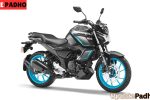The Supreme Court of India has recently made headlines by suggesting a phased ban on petrol and diesel-powered luxury cars. This move, while bold, is seen as a strategic step toward accelerating India’s transition to electric mobility. By targeting high-end vehicles first, the Court aims to send a strong message about environmental responsibility without disrupting the daily lives of the common man.
🌍 Why Luxury Cars Are the Starting Point
India’s roads are filled with millions of two-wheelers and affordable cars, but luxury vehicles—though fewer in number—consume disproportionately more fuel and emit higher levels of pollutants. The Supreme Court bench, led by Justices Surya Kant and Joymalya Bagchi, emphasized that phasing out luxury petrol and diesel cars would not affect the majority of citizens, since only a small fraction of the population owns them.

This top-down approach is designed to:
- Minimize disruption to everyday commuters.
- Set an example by showing that even the wealthy must adapt to cleaner technologies.
- Encourage adoption of electric luxury cars, which are already available in India and globally.
🔧 The Court’s Observations
During hearings on a public interest litigation (PIL) seeking stronger EV policy enforcement, the Court noted:
- Electric luxury cars are now viable alternatives to traditional fuel-powered models.
- A gradual ban would allow manufacturers and consumers time to adapt.
- The government should update its 2020 EV policy to reflect technological and market changes over the past five years.
The Court even suggested pilot projects in metropolitan cities, where pollution levels are highest, to test the effectiveness of such bans before nationwide implementation.

📊 Environmental and Economic Impact
India faces alarming levels of air pollution, especially in urban centers like Delhi and NCR. Luxury cars, often equipped with powerful engines, contribute significantly to emissions. A ban on these vehicles could:
- Reduce urban air pollution, improving public health.
- Boost EV adoption, creating demand for charging infrastructure and green technology.
- Encourage automakers to invest more in electric models tailored for Indian conditions.
Economically, the move could also stimulate growth in India’s EV industry. With luxury EVs already gaining traction, their market share is expected to rise further, potentially surpassing traditional fuel-based models.
🚗 The Road Ahead for Automakers and Consumers
For automakers, the Supreme Court’s suggestion is both a challenge and an opportunity:
- Challenge: Phasing out petrol and diesel luxury cars means rethinking product lines and investing heavily in EV technology.
- Opportunity: India’s growing EV market offers immense potential, especially as government incentives and consumer awareness increase.
For consumers, particularly luxury car buyers, the transition may involve:
- Adapting to new technology: Electric cars come with different driving dynamics and charging requirements.
- Reassessing lifestyle choices: Owning a luxury EV could become a status symbol, reflecting both wealth and environmental consciousness.

⚡ Policy Implications
The Supreme Court’s advocacy for a gradual ban highlights the need for clear government roadmaps. Key policy measures could include:
- Incentives for EV buyers, especially in the luxury segment.
- Expansion of charging infrastructure in urban and semi-urban areas.
- Stricter emission norms for remaining petrol and diesel vehicles.
- Pilot bans in select cities, scaling up based on success.
✨ Conclusion
The Supreme Court’s call for a gradual ban on petrol and diesel luxury cars marks a critical moment in India’s journey toward sustainable mobility. By focusing on high-end vehicles first, the Court ensures minimal disruption while sending a powerful signal about the urgency of combating pollution.
This move could reshape India’s automotive landscape, pushing both manufacturers and consumers toward cleaner, greener alternatives. As luxury EVs become more mainstream, India may well position itself as a leader in the global electric mobility revolution.



